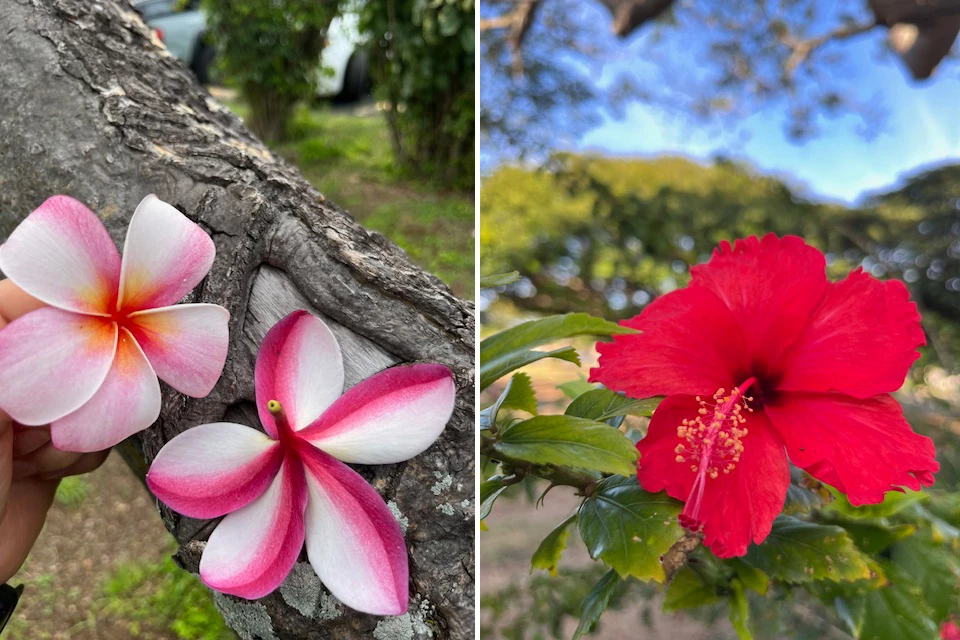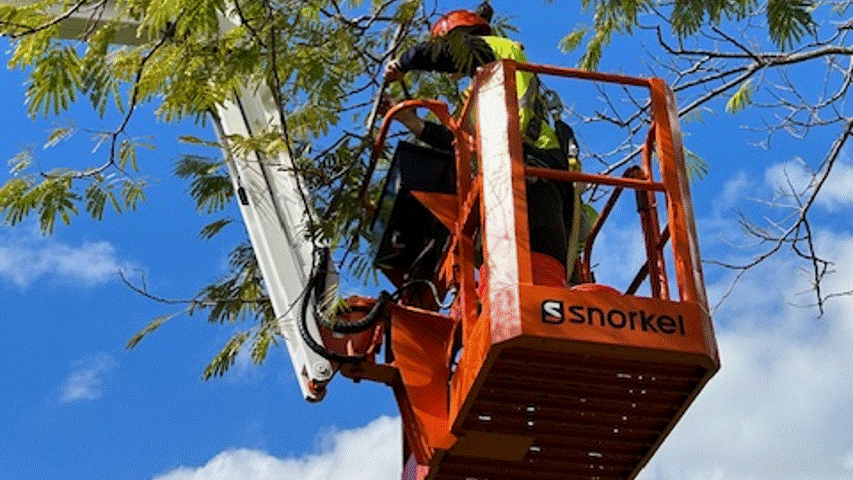Part of a series of articles titled Ford Island Battleship Row Preservation .
Article
Propagating History: How Plants Can Bring a Historical Landscape to Life

NPS Photo
Article written by Claire Kubacki
Working with Scientists in Parks, a program that partners early career scientists with projects in National Park units, Claire Kubacki began work on a plant program that will benefit the historic and cultural landscape of Pearl Harbor National Memorial. The goals of the project are to take cuttings of the historic trees and shrubs around the chief petty officer bungalows in order to propagate the very plants that stood witness to the attack on Pearl Harbor.
Working with Scientists in Parks, a program that partners early career scientists with projects in National Park units, Claire Kubacki began work on a plant program that will benefit the historic and cultural landscape of Pearl Harbor National Memorial. The goals of the project are to take cuttings of the historic trees and shrubs around the chief petty officer bungalows in order to propagate the very plants that stood witness to the attack on Pearl Harbor.
“This internship has been very eye opening. I’ve learned a lot about the intersections between historical and natural resources. I’ve also been able to experience a completely new ecosystem and environment. The island of Oahu was new to me, and being able to live and work here offered a chance at expanding my understanding of the plants, people, and history of this place.”
History of Ford Island
The chief petty officer bungalows are located on Ford Island. Lining Battleship Row, these homes were witness to the December 7, 1941, attack on Oahu. In addition to being homes to soldiers, officers, and families the bungalows were a place of refuge for soldiers who swam ashore after their ships were set ablaze during the attack. The National Park Service acquired this landscape from the Navy in 2009 and has been working to preserve the area so that visitors can imagine the events of the day.
NPS Photo
The bungalows and accompanying terrain are considered a cultural landscape, a historically significant place that shows evidence of human interaction with the physical environment. At Pearl Harbor National Memorial, NPS employees balance the needs of the historic and natural aspects of this site. This management approach is called integrated resource management and allows for cohesive care for the cultural and natural resources in a park.
On the natural resource side of the equation, the historic plants of the Pearl Harbor need tending. Some of the original trees and shrubs that were planted in the early 1930s when these bungalows were built remain today. However, many are unhealthy or unkempt and no longer resemble what the landscape would have looked like in 1941.
In 2023, Claire and other NPS employees set out to remedy that. The goal of the project was to take cuttings from the historic plants in order to eventually replace the unhealthy plants in kind. This kind of propagation allows the plants to live on by still maintaining the genetic makeup of the historic plants. This is a standard of maintaining the authenticity of a historic landscape (see The Secretary of the Interior's Standards for the Treatment of Historic Properties with Guidelines for the Treatment of Cultural Landscapes). Additionally, the project set up a plant nursery to care for these new plants.
On the natural resource side of the equation, the historic plants of the Pearl Harbor need tending. Some of the original trees and shrubs that were planted in the early 1930s when these bungalows were built remain today. However, many are unhealthy or unkempt and no longer resemble what the landscape would have looked like in 1941.
In 2023, Claire and other NPS employees set out to remedy that. The goal of the project was to take cuttings from the historic plants in order to eventually replace the unhealthy plants in kind. This kind of propagation allows the plants to live on by still maintaining the genetic makeup of the historic plants. This is a standard of maintaining the authenticity of a historic landscape (see The Secretary of the Interior's Standards for the Treatment of Historic Properties with Guidelines for the Treatment of Cultural Landscapes). Additionally, the project set up a plant nursery to care for these new plants.

NPS Photo
Plant Cuttings
Working with Dr. Orville Baldos at the University of Hawai’i (UH) Manoa, Claire and the NPS crew started the project in November 2023. The first round of cuttings from plants around the bungalows included species such as Croton (Codiaeum variegatum), Dracaena (Dracaena fragrans), Hibiscus (Hibiscus spp.), Bougainvillea (Bougainvillea spp.), and Plumeria (Plumeria spp.).
NPS Photo
In another type of propagation called air layering, Claire and the team had to use a high lift to reach the upper branches of the trees. While in the tree’s canopy, they removed the bark and cambium around a section of the branch. They again applied a rooting hormone, covered the branch in wetted sphagnum moss, and wrapped it in a plastic to keep it moist.

NPS Photos
Air layering is a way to encourage root growth on healthy tree branches that can then be collected for further growth into a new tree. At the time of this writing, the air layers are still in place and the park will check and collect them when they see proper growth. This method of propagation was completed on large trees within the landscape, including Mimosa (Albizia julibrissin), Monkeypod (Samanea saman), and Ironwood (Casuarina spp.).
It is important to note that not all the species located on the landscape are native plants. Native ecosystems are of the utmost importance; however, the goal of this historic landscape is to recreate what this area once looked like, which includes the trees and shrubs that were planted when these bungalows were built. This balance is a perfect example of how the park must manage the natural and cultural needs of the historic site. The park will keep a close eye on the non-native plants to prevent their spread.
It is important to note that not all the species located on the landscape are native plants. Native ecosystems are of the utmost importance; however, the goal of this historic landscape is to recreate what this area once looked like, which includes the trees and shrubs that were planted when these bungalows were built. This balance is a perfect example of how the park must manage the natural and cultural needs of the historic site. The park will keep a close eye on the non-native plants to prevent their spread.

Future of Ford Island
While Claire’s internship has ended, the propagation work at Pearl Harbor has just begun. The propagations from the historical lineage of plants on the island is crucial to recreating the landscape as it once was. The work that Claire and the team accomplished during this project has laid the foundation for a historically accurate landscape. Thanks to this effort and others the park is undertaking, the landscape will be poised for a revival – one that will enhance visitors’ connection to the history and legacy of Pearl Harbor.Claire Kubacki would like to thank Jay Sturdevant, Integrated Resource Management Lead, Anna Welland, Gardener at Pearl Harbor, along with the University of Hawai’i Manoa’s Dr. Orville Baldos for their support and mentorship throughout this project.

NPS Photo
Scientists in Parks (SIP) internships place hundreds of aspiring professionals in parks across the NPS to work on natural resource management needs. SIP is a partnership with the National Park Service and Stewards Individual Placements Program, Environment for the Americas, Ecological Society of America, The Geological Society of America and the National Park Foundation.
References
U.S. Department of the Interior, National Park Service. (1996). The Secretary of the Interior's Standards for the Treatment of Historic Properties with Guidelines for the Treatment of Cultural Landscapes. Cultural Resource Stewardship and Partnerships, Heritage Preservation Services, Historic Landscapes Initiative. (Washington, D.C.).Preservation Matters: Landscape Maintenance - Replacing Historic Plants with Alternative Types (U.S. National Park Service) (nps.gov)
Learn More
Source: NPS DataStore Collection 9431. To search for additional information, visit the NPS DataStore.
Last updated: August 9, 2024
